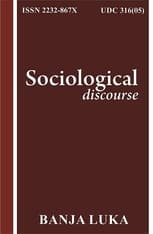Pop-art and Criticism of Reception of Vacuity (the society) in the works of Andy Warhol
Pop-art and Criticism of Reception of Vacuity (the society) in the works of Andy Warhol
Author(s): Nataša VilićSubject(s): Aesthetics, Culture and social structure , Sociology of Culture, Sociology of Art
Published by: Naučno udruženje Sociološki diskurs
Keywords: pop art; aesthetics of emptiness; mass culture; cultural decadence;
Summary/Abstract: With the advent of pop art and artistic creativity of Andy Warhol are changed the classic works of reception of art and art in general. Andy Warhol in his artistic action is insisting on the immediate actions and the naked form - those are so-called the works of “pure” form, which create a confusing gap; whose “content” is necessary to construct, that is, to invent. That in the opinion of Andy Warhol can only audiences and critics - with that he actually makes room for interpretation of his artistic work. Andy Warhol was aware of the existing “gaps of entity”. He wants the freedom which he enjoys in his artistic expression to also provide to the recipient, he is trying to leave his artwork fully open for reading and interpretation. In his quest he comes to the intelligible symbolic acts spontaneously. When the artist himself once firmly justifies his image - he imposes the audience and the lasting perception of his work. Andy Warhol observes that in the creation of mass industrial society is a source of the anxiety of the West. The causes of this condition are different: the money, the androgynous future of man, machines which are replacing man and colonizing his consciousness and thus enslave him. Andy Warhol wonders - whether the contemporary art can offer the optimism?! His optimism could be seen as his opposition to European pessimism and decadence.
Journal: Sociološki diskurs
- Issue Year: 5/2015
- Issue No: 9
- Page Range: 71-85
- Page Count: 15
- Language: English

